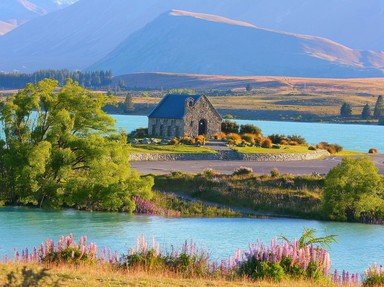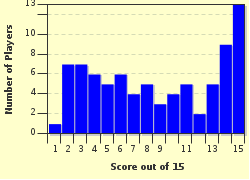Quiz Answer Key and Fun Facts
1. Which US state gave all women the vote before New Zealand did so in 1893?
2. In which year did Jenny Shipley stage a successful coup against Prime Minister Jim Bolger - while he was overseas - and become the first female Prime Minister of New Zealand?
3. Following Labour's victory in the 1984 elections, the new Minister of Finance, Roger Douglas, began a series of economic reforms which effectively stood the country on its head. His plan rapidly acquired a name by which it is still known. What is that name?
4. Bill Rowling became Prime Minister of New Zealand a few days after Norman Kirk died unexpectedly in 1974. However, "Bill" was a nickname, not his actual first name. Do you know what his given first name actually was?
5. Arnold Nordmeyer, who was appointed the second Labour Government's Minister of Finance in 1957, believed that New Zealand faced a balance of payments crisis. As a result, his first budget was very punitive, mandating large increases in tax rates. The budget passed into legend - as what?
6. The First Labour Government, elected in 1935, introduced the "cradle-to-the-grave" model for Social Security in New Zealand which was only finally laid to rest by the Fourth Labour Government in 1984, led by David Lange. Who was the Prime Minister in 1935?
7. Winston Peters, leader of the New Zealand First Party, made accusations of corruption and incompetence against the Inland Revenue Department and the Serious Fraud Office in 1994. As a result an inquiry was set up by the government to look into the allegations. What was this inquiry called?
8. New Zealand has a tradition of "joke" political parties, ones which have usually been set up to pillory the political establishment - or just for a bit of fun. The names are usually the giveaway. Which of the following groups was NOT a registered joke political party in New Zealand?
9. In 1984 Prime Minister Rob Muldoon appeared on TV on June 14, 1984, apparently drunk, to announce a snap election. What reason did he give for the Government going to the polls nearly six months early?
10. Mike Moore, briefly leader of the Labour Party and Prime Minister in 1990, became the head of which international organisation in 1999?
11. The Head of State in New Zealand is the Governor-General.
12. John Key became Prime Minister as leader of the National Party which won the 2008 general election. He worked in the financial sector prior to entering politics in 2001. Which area of finance was he involved in?
13. Following the Air New Zealand DC-10 crash on Mt Erebus in Antarctica, a government inquiry into the cause of the accident was set up under Justice Peter Mahon. He coined a phrase in his report which has become part of New Zealand's popular culture. What was it?
14. Who was the Social Credit Party leader between 1972 and 1985?
15. Which of the following political parties is NOT a member of The Alliance?
Source: Author
capfka
This quiz was reviewed by FunTrivia editor
bloomsby before going online.
Any errors found in FunTrivia content are routinely corrected through our feedback system.

